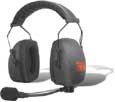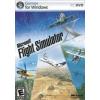
Prepare for the TBAS
Overview
The Test of Basic Aviation Skills (TBAS) is a computerized psychomotor test battery. It is used as a tool for the selection of United States Air Force pilot candidates. TBAS scores are combined with the candidate’s Air Force Officer Qualifying Test (AFOQT), and flying hours to produce a Pilot Candidate Selection Method (PCSM) score. The PCSM score measures a candidate’s aptitude for pilot training – that means a predictive measure of whether or not a person will do well during Undergraduate Pilot Training (UPT). The TBAS score is just one facet out of many that make up the “whole-person” concept that is used to determine the PCSM score. In AFROTC, the Detachment Commander factors in a slew of scores to rank pilot candidates who eventually compete nationwide for AFROTC pilot slots.
Preparation
There are some “urban legends” out there that say playing certain video games will help you prepare for the TBAS. The most sound advice is: get a good night’s sleep the night prior and eat breakfast before taking the test. Clear your mind and be ready to concentrate on the tasks at hand. No game is going to prepare you for the TBAS. Here is a link to online TBAS Preparation Flash Cards. Join our online discussion forums to find out what others think of the TBAS.
Administration
You must complete the TBAS Candidate Worksheet, and bring it with you on the day of the test. You should also bring a valid form of ID, your Social Security card, your current college transcript, and your logbook if you have any flying experience. The TBAS test will test your concentration and ability to multitask. If you experience some condition that is genuinely stressful, or if you are too ill/tired to take the TBAS, you will need to reschedule for another time. There is no penalty for rescheduling.
When you are ready to begin the test you will be seated at the TBAS station and asked to enter the data from your completed < a href="https://pcsm.aetc.af.mil/CANDIDATE%20INFORMATION%20WORKSHEET.doc" target="_blank">Candidate Worksheet into the TBAS for use in processing and tracking your test scores. The test administrator will then read a standard instruction briefing to you. Detailed instructions for each of the nine subtests will appear on the computer screen. Take all the time you need to make sure you understand these instructions. You will not be penalized for time spent on instructions.
Much like its predecessor, the BAT Test, the TBAS consists of ten subtests that measure psychomotor skills and cognitive aptitude. The test takes approximately 1 hour (most candidates finish the test in about 30 minutes). After you have completed the test, the test administrator will send the raw data to a central scoring facility. Provided you have already taken the AFOQT, you should be able to check your PCSM score via the AETC website within 1-2 days after we receive your TBAS test. Please check with your Test Control Officer (TCO) as to when they will send the TBAS test.
It is very important that you do not discuss the contents of the test with anyone other than the test administrator. If you do discuss the test with anyone else you will be held responsible for violating a legal regulation, Air Force Instruction 36-2605, Air Force Military Personnel Testing System. You will also be disqualified from consideration for Air Force pilot training.
Advice from Recent Test Takers
- “Well, I got my TBAS score back last week and was hoping I would do well enough to submit my package for the upcoming UFT active duty board, but am pretty bummed that my PCSM is only a 52 with a 98 Pilot. Am planning to retake it as soon as the 180-day point rolls around. Any of you guys have any words of advice, aside from logging more flying hours and playing FPS with an inverted view? I had trouble with MULTI-TASKING! I just could not track the moving target with the joystick while also trying to work the rudders. Maybe my hand-eye coordination is just atrocious. I know all TBAS testing locations use the same joystick but dang, the one I used was not very sensitive.”
- “I focused between the two parts you have to track. Keep “ball” you have to track with the rudder in your peripheral, and let your hands and brain do the rest. I started trying to anticipate its direction change, but quickly realized that didn’t work. It probably measures reaction time more than if you can keep it in the container. Good luck next time! “
- “How exactly do you study for the spacial orientation ? Are there any good resources online or anything?”
“Flash cards.
Take one set, and draw up and airplane flying over the four squares at headings of 0, 45, 90, 135, 180, 225, 270, and 315.
Take another sheet, draw about 12 sets of four squares with a N, S, E or W next to them. This is your answer sheet. Mix up the first set of cards and flip through them, marking the North, East, South or West squares as indicated by the N/S/E/W on your answer sheet. Repeat. You’ll notice a pattern.”
- “Take your time and carefully read and reread all instructions before beginning a section. There is no time limit here and, if I remember correctly, you get a little sample before you take the actual test. Study this, imagine what you are going to do, imagine possible variations (particularly for the Directional Orientation Test) and what your response will be, and mock test yourself (touch but don’t push buttons… particularly for the Emergency Scenario Test)….”
- “The control inputs during the actual TBAS Test are the HOTAS Cougar (~300$) and CH-Rudder Pro USB (120$).
Cougar is a metal joystick and throttles combo and CH Rudder Pro is a plastic rudder pedals with a weird feel to them due to pedals being too close to each other and not enough feedback. Both are sufficient to test reflexes.”
Test Descriptions
Directional Orientation Test
Measures spatial orientation abilities: The participant must determine a UAV’s position relative to a target. The test simultaneously presents a “tracker map” which shows the location and heading of the UAV; and a forward field of view, as seen through a fixed, forward pointing camera of a UAV, which shows a single building surrounded by four parking lots. The task is to click on the parking lot that a computer generated voice instructs. There are 48 questions.
3-Digit and 5-Digit Listening Test
Participants are presented with auditory letters and numbers. They must squeeze the trigger when they hear any of the three or five specified numbers. The test lasts approximately three minutes.
Participants use rudder pedals to keep a box over an airplane as it moves horizontally along the bottom of the screen. The airplane moves at a constant speed and changes direction when it “hits” the side of the screen or if a participant successfully targets it for multiple seconds. The task lasts three minutes and the level of difficulty (speed of the airplane) increases as the task progresses.
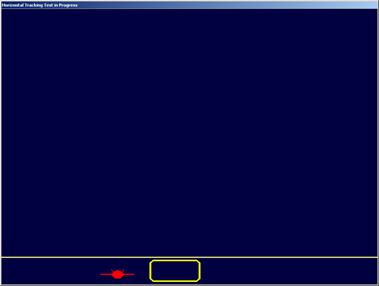
Participants use the joystick to keep the gun sight on the airplane as it moves at a constant rate. The airplane randomly changes direction when it hits the side of the screen or if a participant successfully targets it for multiple seconds.
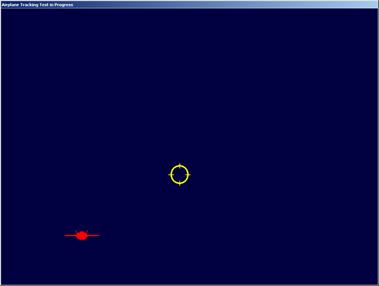
This test requires you to perform two previously tested tasks simultaneously. First, you track an airplane moving along a horizontal axis as you did in the Horizontal Tracking Test. Second, you track an airplane moving in two dimensions as you did in the Airplane Tracking Test.
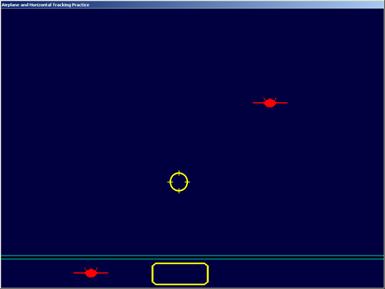
This test requires you to perform three previously tested tasks simultaneously. First, you will track an airplane moving along a horizontal axis as you did in the Horizontal Tracking Test. Second, you will track an airplane moving in two dimensions as you did in the Airplane Tracking Test. Third, you will respond when you hear any of the three or five specified target numbers.
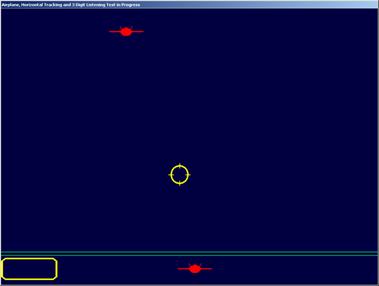
Participants simultaneously perform the horizontal tracking task and the airplane tracking task, they are presented with three emergency scenarios (one at a time) which they must cancel out by typing a code with the keyboard.
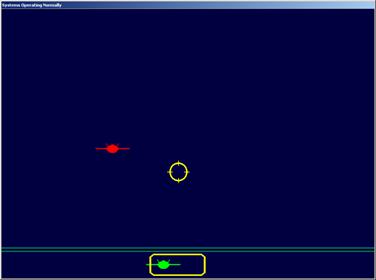
AFOQT Test Advice
“Study advice: The Military Flight Aptitude exam book is good for mazes, mechanical comp, word knowledge etc. However study the Officer Candidate Tests book, it is much better and more challenging in the math and arithmetic knowledge sections (spelling is obviously not my strength). Study to realistic times ONCE YOU HAVE mastered the problems.”

